How to Prepare your Website for Seasonal Trends in AdTech?
As a publisher, you may notice that your ad revenue fluctuates during the year. This is attributed to seasonal trends in digital advertising.
In the run-up to the most profitable season of the year (Q4), we explain what are the key trends and dates in Q4 and how to prepare your website to benefit from this time as much as possible.
What is Seasonality?
Seasonality is any predictable variation or trend that occurs during the same time period, year over year.
Seasonality generally falls under 3 main categories:
- Cultural (e.g., Easter, Christmas, New Year)
- Commercial (e.g., Black Friday, Cyber Monday, Singles’ Day)
- Ad hoc (e.g., World Cup, Olympic Games, presidential elections)
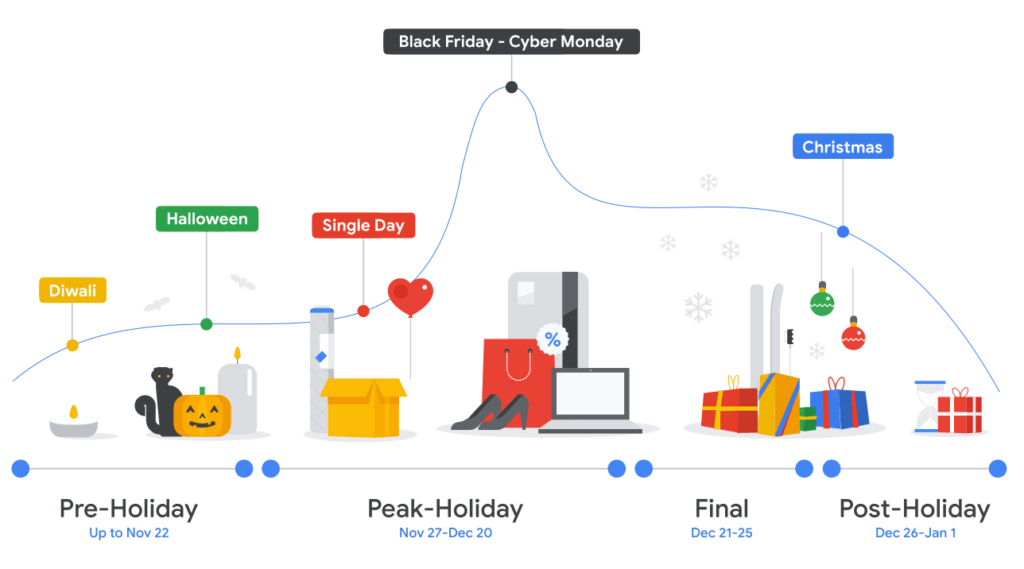
Source: Google
Seasonality Examples
Data shows a 663 per cent increase in sales on Black Friday compared to an ordinary day.
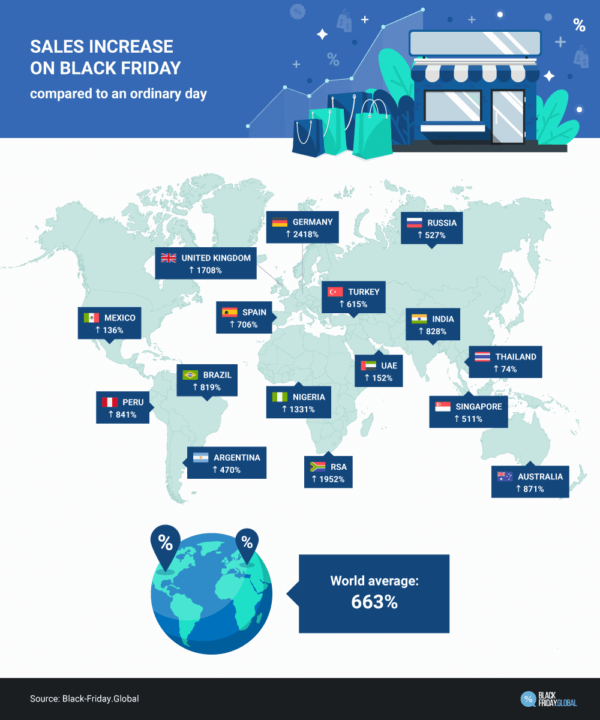
Source: Black-Friday.global
For publishers, this is an opportunity to benefit from record-high CPMs and increased user traffic. However, we’ve seen many brands starting to boycott Black Friday as a form of protest against consumerism and the negative social and environmental impacts associated with it. Nevertheless, the majority of brands still embrace the biggest shopping day of the year.
Also, keep in mind that seasonal opportunities also heavily depend on your audience. For example, Christmas and New Year are the holidays that are celebrated globally. Nevertheless, the dates of these celebrations can differ in many countries.
Many Orthodox countries, like Moldova and Romania, celebrate Christmas at the beginning of January. Chinese New Year is celebrated in February, as opposed to December. Therefore, you can extend this season by analyzing where your website traffic comes from.
Why is Seasonality Important?
Successfully navigating seasonality in digital advertising requires a combination of data-driven insights, strategic planning, and the ability to adapt campaigns to changing consumer behaviors and market dynamics.
What are Seasonal Trends?
Seasonal trends refer to the calendar or commercial events that happen every year. Seasonality in digital advertising is divided into 4 quarters. Each quarter has its own trends and opportunities in the digital marketing and advertisement sector that marketers should stay informed about.
Advertisers usually manage their budgets on a monthly or quarterly basis. This means publishers generally see a dip in CPMs at the beginning of a quarter and an increase at the end of a quarter. There is also traditionally a dip at the beginning of every month.
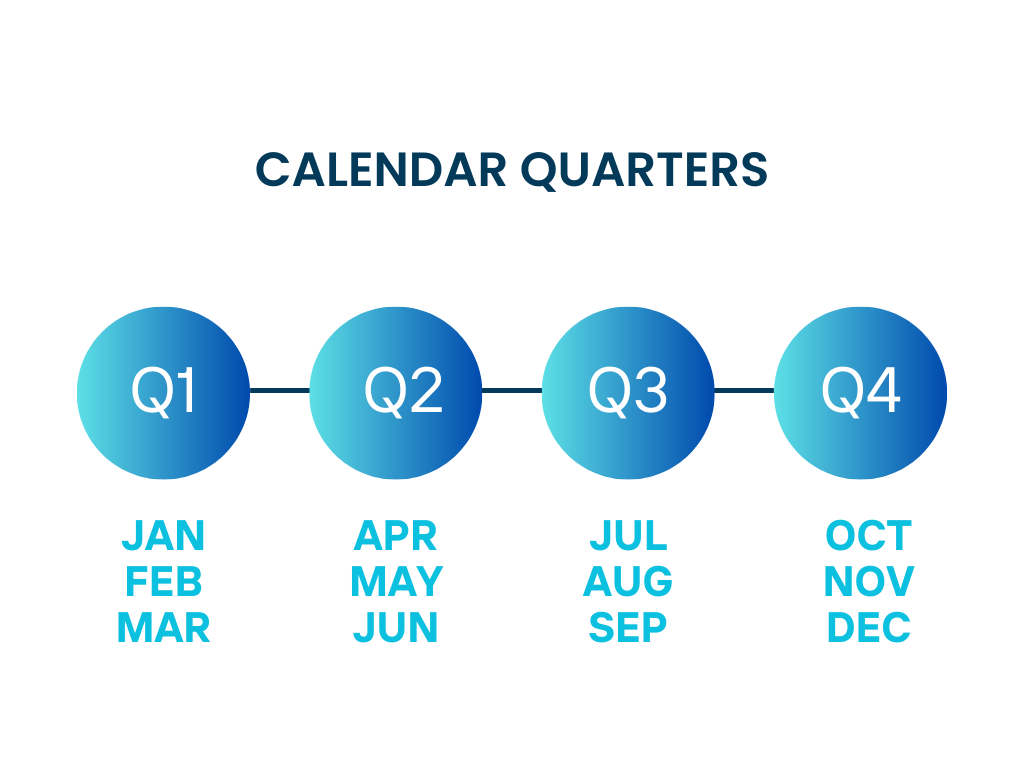
- Q1
This is notably the worst quarter for publishers revenue-wise. During this quarter, advertisers are holding and planning their budgets as consumers do not spend as much after the winter holidays.
However, since direct sales drop, more ad inventory gets sold through programmatic channels. This can potentially compensate for a decrease in eCPMs.
In the middle of the quarter, publishers may already notice that CPMs slowly start to return back to normal.
Related Article: What Publishers Need To Know About eCPM Drop Each January?
- Q2
During this quarter advertisers start to spend their budgets more actively, which equals better revenue for publishers.
Nevertheless, seasonality trends change constantly. For example, Q2 2023 benefited from easier comps than recent quarters. Q2 2022 ad revenues grew at a more measured pace than Q4 2021 or Q1 2022, which saw dramatic post-COVID spikes in ad spend.
Source: Adworld
- Q3
Summer is traditionally a quiet season, as people spend more time outdoors and less online. Advertisers usually readjust their budgets during this time and devise new strategies for Q4.
Naturally, publishers see the highest dip in July, after which CPMs gradually start to increase.
- Q4
This is the most profitable season for publishers and advertisers. Brands want to be seen, and the competition is higher than ever. Websites massively invest in holiday-focused content and create mammoth pieces like this Black Friday deals page. Major holidays like Thanksgiving Day and Diwali begin in November, following the biggest consumer events–Black Friday and Cyber Monday.
CPMs remain high all the way through December in the run-up to Christmas and the New Year.
Q4 Timeline & Key Dates
- Early Indicators: Look for the first week of October and early November to be early indicator for Q4.
- Deals Demand: Marketers use Programmatic Guaranteed to lock up valuable inventory, increasing spend starting mid-October, accelerating in the week leading up to Thanksgiving and sustained increased spend through the end of December. Auction Packages are also an effective way to target specific pockets of OA inventory during the most competitive and expensive time of the year.
Traffic fluctuations during holidays
During the week of Thanksgiving, we usually see a decrease in desktop offset by a small growth in mobile web as users shift environments during the holiday week. For example, in 2022, Internet traffic went down by 13% during Thanksgiving dinner.
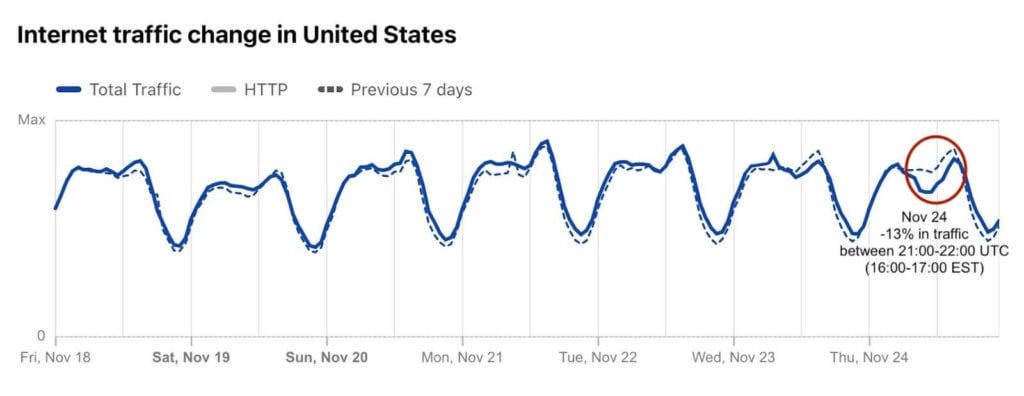
We then saw traffic go up by 15% on the next day and on Black Friday morning was growing ~16% more in traffic at 09:00 EST (06:00 PST).

Source: Cloudflare
Speaking of CMPs, desktop CMPs increase approximately by 40% from mid November to mid December, with most of the increase coming from mid-November through Black Friday and Cyber Monday peak.
Post Holiday there is usually a 30-40% CPM drop that coincides with a huge influx in supply as the industry enters the New Year, a result of device activations as well as inventory that was locked up in Q4 coming back online. With web traffic slowly bouncing back as we enter New Year, the app inventory traffic grows primarily because of new device activations.
Seasonality Analysis in Adtech
We have looked at last year eCPM across our network to see how notable was the difference in eCPMs in January 2022 (notably the worst month for publishers where prices see the most significant dip) against November 2022 (the highest-paying month). We also divided the numbers across Desktop, Smartphone, CTV, and Tablet devices.
According to the graphs below, we can see that the highest increase was observed in the Smartphone category, which is explained by people traveling heavily in the holiday season. The total eCPM increase, which stands at 42%, coincides with a number often thrown around – 40% change.
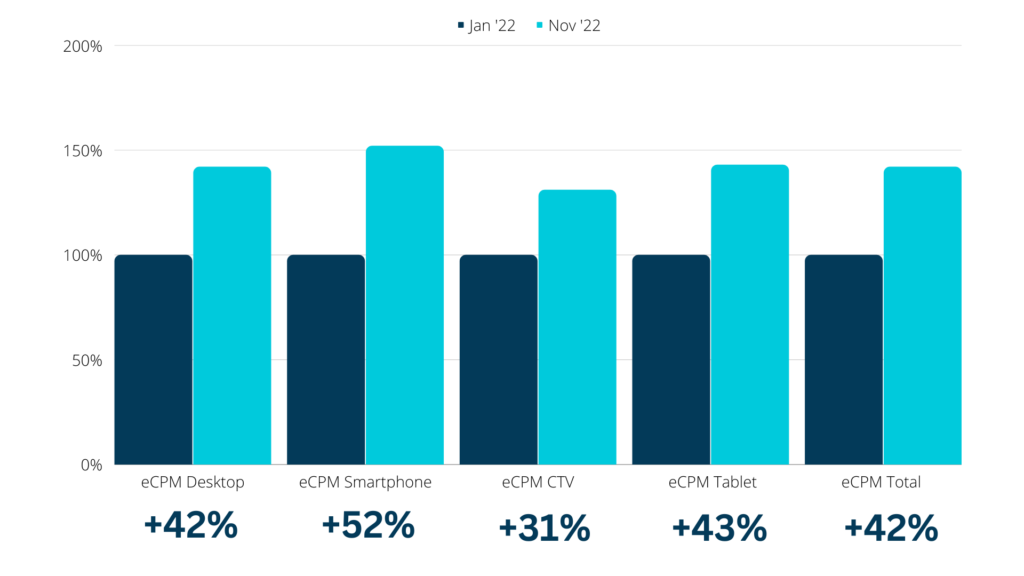
6 Tips to Prepare Your Website for the Largest Selling Holidays
1. Make sure your site has great UX
In 2022, Google completed the rollout of Page Experience Update. The ranking algorithm ranks pages based on users’ perception of the experience with a web page.
That means your ranking will be lower if Google thinks that your page provides a poor user experience.
Therefore, it is crucial that your website is fast, mobile-friendly, and responsive. Use Google Search Console or alternative tools to detect errors and improve your website performance.
One of the most popular SEO tools, Ahrefs, has clear and consistent navigation, search functionality, featured articles, an easily identifiable homepage button, and great usability.
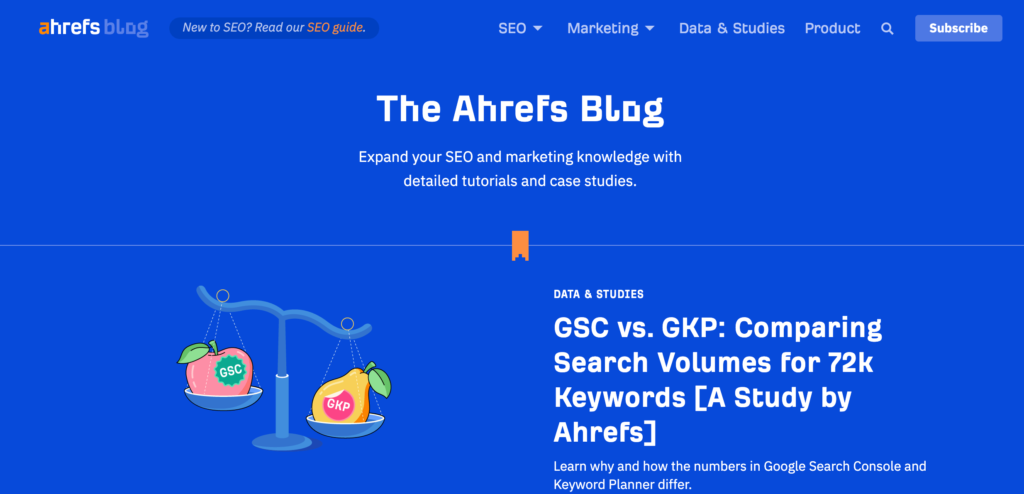
2. Try a more advanced monetization solution
The latest forecast by eMarketer predicts that US digital ad spend will reach $239.89bn in 2024.
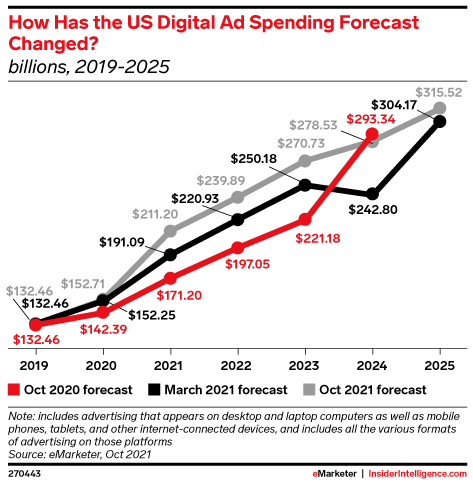
Source: eMarketer
Since your website traffic will increase during Q4, the ad inventory will become more attractive for premium advertisers, and the bid density will grow.
Monetization solutions like header bidding allow publishers to sell ad inventory at the highest possible price thanks to the increased competition of 30+ SSPs. In the top season, there is even more demand coming from various partners which creates bigger competition in header bidding and generates exceptionally high eCPMs.
If there is no competition between demand partners (like Google AdSense), you may never achieve your revenue potential in Q4.
3. Have ad refresh
As users tend to spend more time online prior to the winter holidays, publishers can generate extra revenue from refreshed ads. And this can’t be achieved if you use Google AdSense.
4. Update your existing content
Search engines prioritize fresh, updated content, which helps to rank higher. Therefore, make sure your existing content is up to date.
In addition, ensure your website interface is sleek and consistent. This includes:
- following on-page SEO best practices (optimizing content for readability);
- writing SEO-friendly titles, subheadings, and meta descriptions;
- structuring content around user intent.
5. Use best performing ad formats
Q4 is your chance to utilize with more high-impact ad formats to amplify your ad revenue even more. For example, interstitial ads have higher CPMs compared to standard ad formats, like display ads.
Adding more ad placements equals more ad revenue. However, keep in mind not to overcrowd your website with too many ads. It’s important to find the right balance between a maximum number of ad placements and a good user experience.
Bonus Tip
Ensure that your ads aren’t placed too close to navigational elements and that your website’s interface doesn’t lead to accidental ad clicks. Otherwise, you risk getting a Google two-click penalty which will lead to a significant CPM drop.
In the example below ads are clearly defined and placed farther away from the content and navigational items.
6. Improve website loading speed
An ideal web page loading time should be under 2 seconds. This is particularly important for mobile devices, as mobile traffic share accounts for 55.04% of the global traffic in 2023.
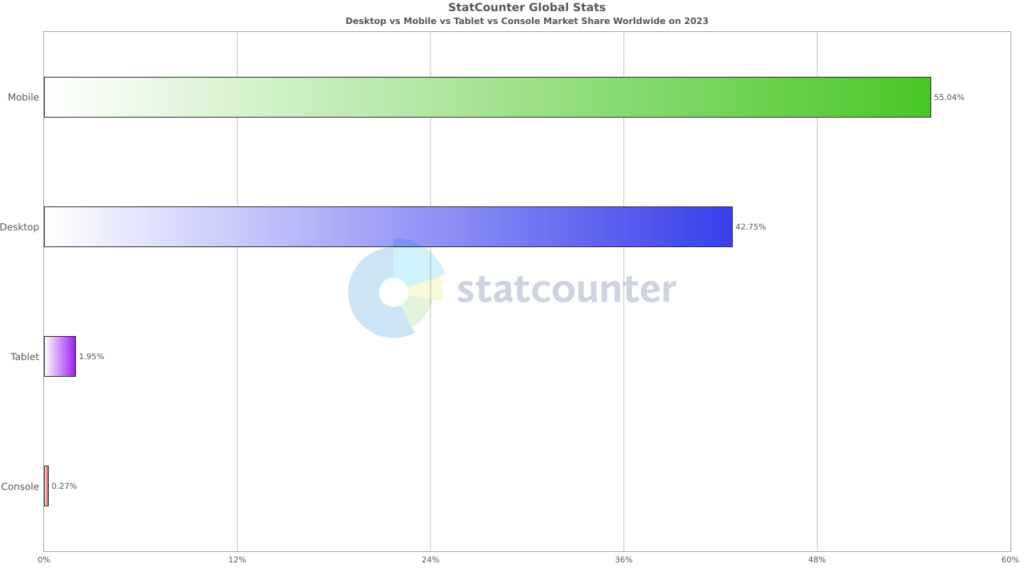
Source: Statcounter

Final Word
It’s important to understand that seasonal changes are inevitable. To compensate for the revenue drop during an unprofitable season, you can make necessary tweaks to earn more in the next season.
By allowing your adtech partner to optimize your ad revenue results, you can focus on generating traffic and keeping readers engaged with your content.
If you still have any questions regarding how to prepare your website for the holiday season, email us at [email protected] or leave a comment below.


